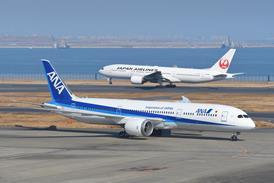Demonstrator to fly over populated areas to determine acceptable noise levels
NASA has funded four teams to study the feasibility of and concepts for a low-boom supersonic technology demonstrator to fly in 2008. Plans call for the manned demonstrator to be flown over populated areas to determine whether a mitigated boom can be acceptable to the public.
Boeing Phantom Works, Lockheed Martin/Cessna, Northrop Grumman/Gulfstream and Raytheon are working under $1 million study contracts awarded via American Technology Alliances, which manages the Super 10 industry group that has been working with NASA to get a supersonic demonstrator off the ground. General Electric, Pratt & Whitney and Rolls-Royce have also been funded to provide data on existing engines for the demonstrator.
NASA will use the study results to draw up a request for proposals in the fourth quarter, leading to award of a contract early next year to design and build the demonstrator, says Bob Meyer, sonic boom mitigation project manager. The $100-150 million project will focus on reducing sonic boom strength by shaping the entire aircraft, not just the forward fuselage, as with the modified Northrop F-5 shaped-boom demonstrator flown in 2003.
Studies are aimed to determine what level of sonic boom reduction is feasible, and at what cost, using existing engines and components. “We are aiming for a maximum shock strength of 0.5lb/ft², but would be surprised if that is acceptable. It is on the threshold,” says Peter Cohen, supersonic sector manager for NASA’s vehicle systems programme.
“If 0.5lb/ft² is not acceptable, the programme is not viable, so we have to come up with a vehicle that can vary the level of sonic boom to determine what is the maximum acceptable,” says Joe Pawlowski, Northrop Grumman programme manager. By varying Mach number, altitude, weight and shaping, the company hopes to demonstrate boom strengths from 0.2-0.5lb/ft².
The demonstrator is expected to weigh at least 13,600kg (30,000lb), be around 30.5m (100ft) long, and capable of cruising at above Mach 1.4, even in the high temperatures at Edwards AFB, California, where initial tests will be conducted.
After flight-envelope clearance, the demonstrator will be flown day and night over populated areas to gather public-acceptance data for presentation to the International Civil Aviation Organisation’s committee on aviation environmental protection in 2010 in a bid to get the ban on civil overland supersonic flight lifted.
GRAHAM WARWICK/WASHINGTON DC
Source: Flight International























